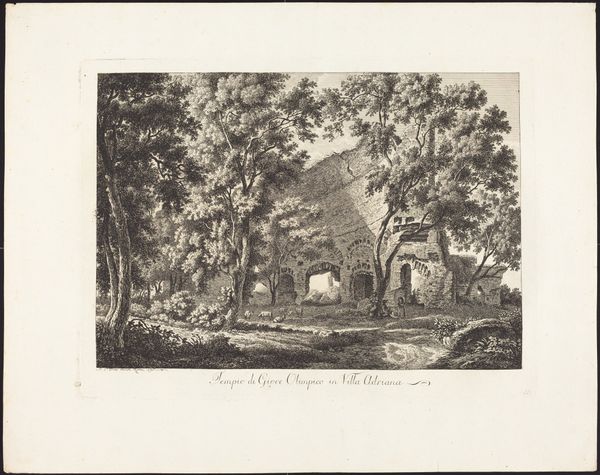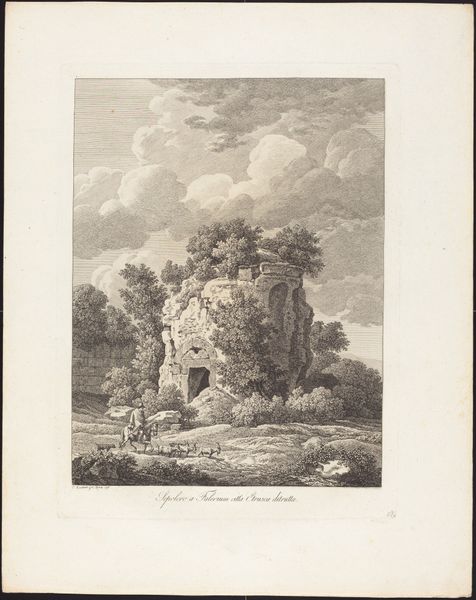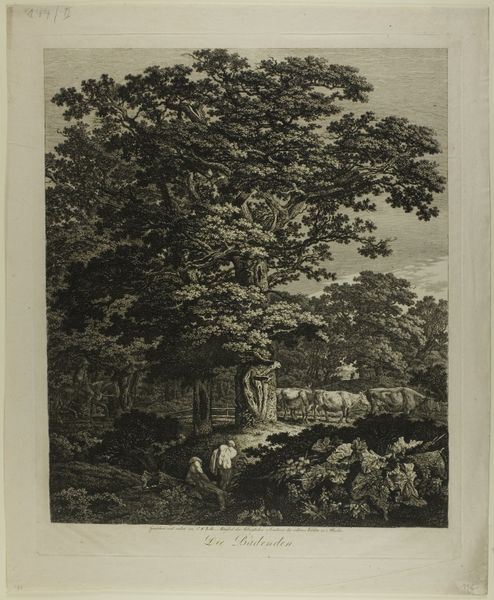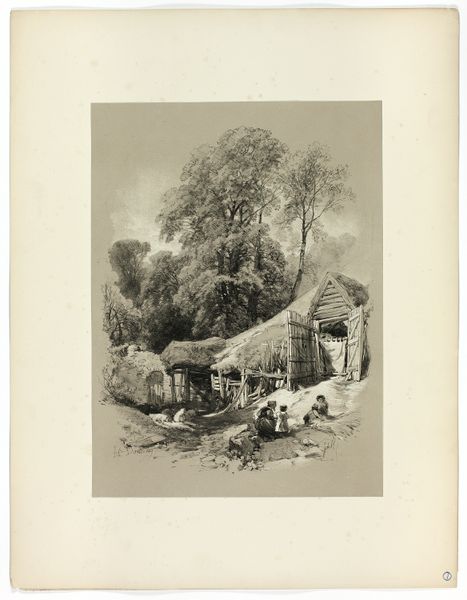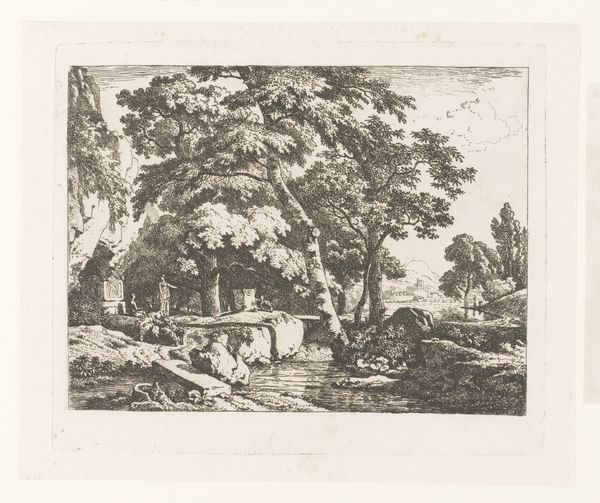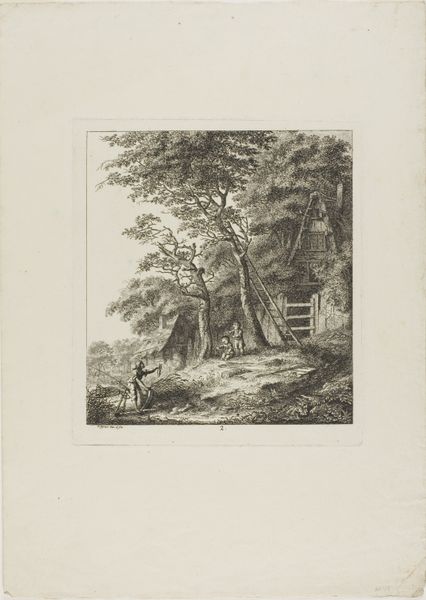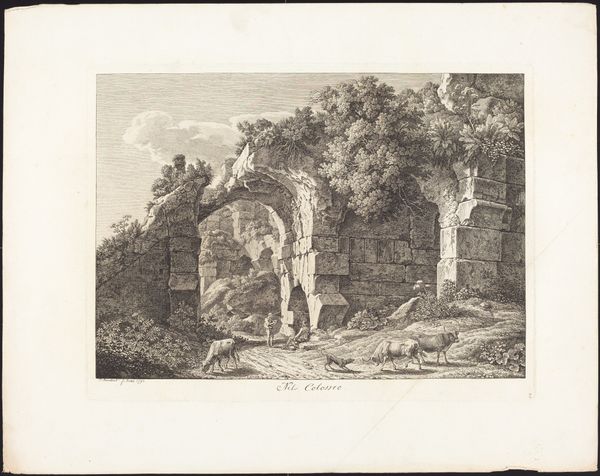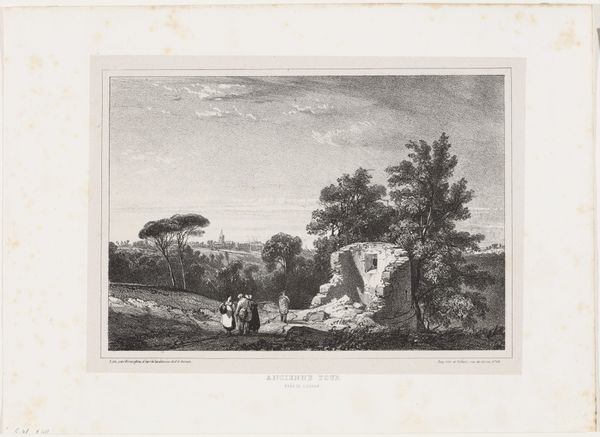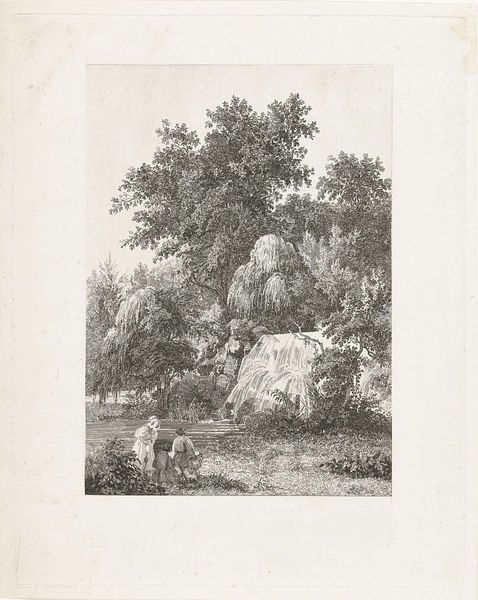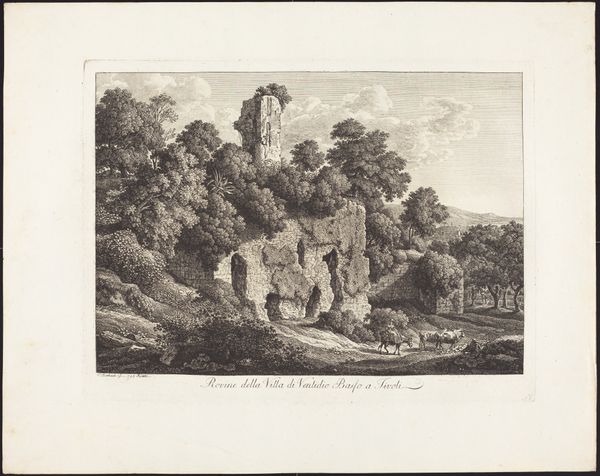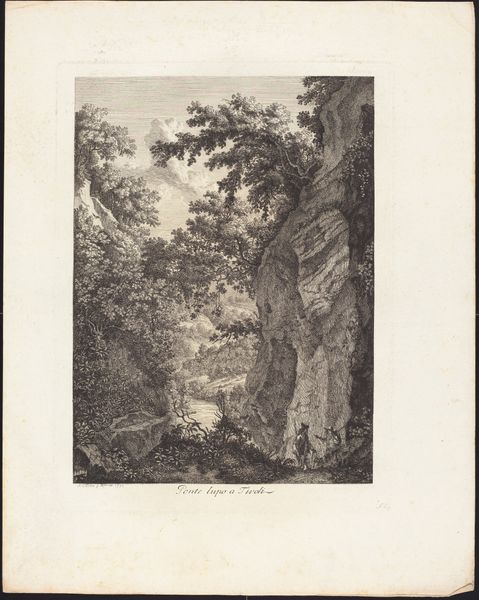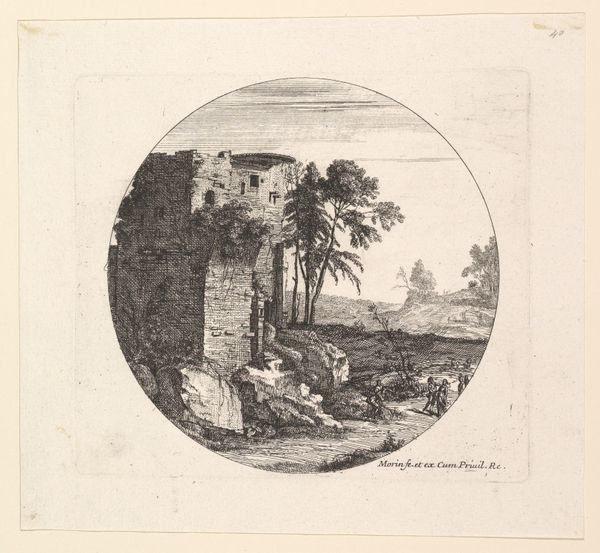
Rovine del Piano superiore della Villa di Cassio a Tivoli 1794
0:00
0:00
print, etching, paper, engraving
#
neoclacissism
# print
#
etching
#
landscape
#
paper
#
engraving
Dimensions: plate: 37.2 x 28 cm (14 5/8 x 11 in.) sheet: 49.2 x 39.2 cm (19 3/8 x 15 7/16 in.)
Copyright: National Gallery of Art: CC0 1.0
This print, "Rovine del Piano superiore della Villa di Cassio a Tivoli," was made by Albert Christoph Dies in the late 18th or early 19th century using etching and engraving. The crisp lines and tonal variations achieved through these techniques emphasize the texture of the ancient ruins and the surrounding landscape. Dies, like many artists of his time, was captivated by the romantic appeal of classical ruins, and printmaking was a key medium for disseminating these images widely. The labor-intensive process of etching and engraving, involving meticulous handwork, reflects a pre-industrial mode of production, a time when artistic skill and craftsmanship were highly valued. Yet, prints like these were also a form of mass media, catering to a growing market of art consumers eager to experience the sublime through imagery. Considering the materials and processes involved sheds light on the cultural and economic context in which this artwork was created, bridging the gap between fine art and the wider world of production and consumption.
Comments
No comments
Be the first to comment and join the conversation on the ultimate creative platform.
